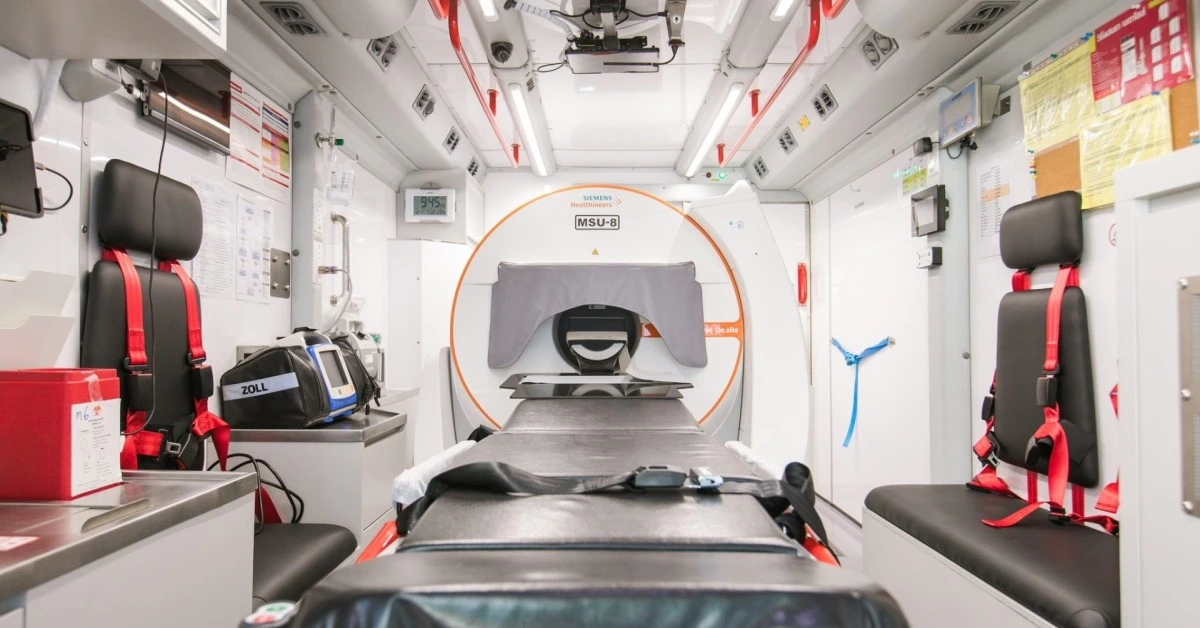
GERMANY – Siemens Healthineers has unveiled an innovative mobile stroke unit designed to expedite stroke diagnosis and treatment by integrating advanced imaging technology directly into ambulances.
Central to this development is the SOMATOM On.site computed tomography (CT) scanner, which delivers high-quality imaging comparable to stationary hospital scanners.
This integration enables immediate, on-site assessment of stroke patients, facilitating rapid differentiation between ischemic and hemorrhagic strokes.
A notable feature of the SOMATOM On.site is its specialized telescopic gantry, allowing for easier positioning of the patient’s head while they remain on the stretcher.
This design ensures that the patient’s head is fixed in the correct, isocentric position, reducing motion artifacts typically caused by scanner movements. The fixed trolley and unique telescopic gantry further enhance image stability and quality.
Complementing the imaging capabilities is the digital platform Stroke Connect, which facilitates end-to-end image transfer and bridges pre-hospital and in-hospital data silos.
This telemedicine approach allows hospital-based specialists, such as radiologists and neurologists, to remotely assess clinical patient data via audio and video links.
Early remote evaluation accelerates therapy decisions, enabling patients to be triaged directly to specialized care units, such as angio suites for thrombectomy, upon hospital arrival.
The integration of advanced CT imaging and telemedicine into mobile stroke units addresses a critical need in stroke care.
According to Siemens Healthineers, early diagnosis in the field allows for prompt treatment decisions, which is crucial in reducing the time to treatment and improving patient outcomes.
This development aligns with broader trends in emergency medicine, where mobile stroke units equipped with onboard CT scanners have been shown to significantly reduce time-to-treatment, thereby decreasing patient disability and mortality rates.
The ability to perform head scans and initiate treatment protocols en route to the hospital represents a significant advancement in acute stroke care.
XRP HEALTHCARE L.L.C | License Number: 2312867.01 | Dubai | © Copyright 2025 | All Rights Reserved